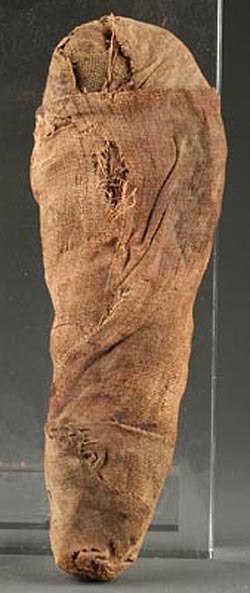 214 years ago this summer during Napoleon’s Egyptian campaign, Capt. Pierre-Francois Bouchard discovered the Rosetta Stone, sparking more than two centuries of fascination with the art and artifacts of ancient Egypt. The style of Egypt appeared in several stylistic revival periods, with some objects incorporating overt design elements, like this clock garniture set with sphinxes and obelisks, while pieces like this daybed rely on more subtle Egyptian-influenced lines.
214 years ago this summer during Napoleon’s Egyptian campaign, Capt. Pierre-Francois Bouchard discovered the Rosetta Stone, sparking more than two centuries of fascination with the art and artifacts of ancient Egypt. The style of Egypt appeared in several stylistic revival periods, with some objects incorporating overt design elements, like this clock garniture set with sphinxes and obelisks, while pieces like this daybed rely on more subtle Egyptian-influenced lines.
But the fascination didn’t stop with replicas, and artifacts continued to flow out of Egypt, largely unchecked through the early twentieth century. While there are plenty of other antiquities in the database, it’s clear that you could easily reassemble a tomb with the material you’ll find. We have everything from a sarcophagus to canopic jars (the jars used to hold the internal organs of the mummified) to painted cartonnage remnants (read about cartonnage in our reference note here) to the treasures that one might have chosen to be buried with. You’ll find pottery ring seals, bronze figures, and, my personal favorite, a mummified bird (pictured above), complete with x-ray images to verify its authenticity!Sadly, because of the large number of fakes (and, perhaps, illegally obtained objects), provenance is key with these items. When it comes to selling Egyptian artifacts at auction, the ones that do best are most often those from dealers with strong, knowledgeable reputations and with long histories of ownership to verify their origins, so beware of objects with little more than a “good word” and a letter of authenticity from an unrelated third party!



